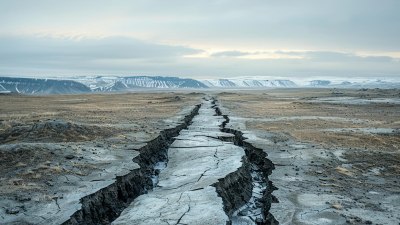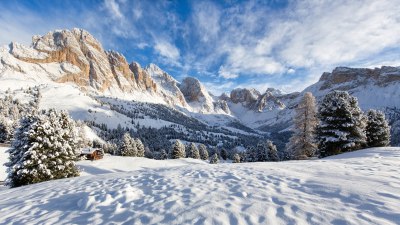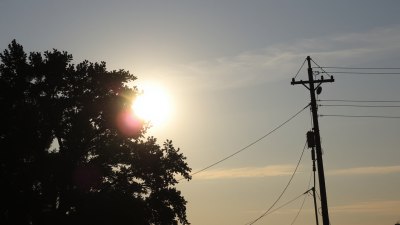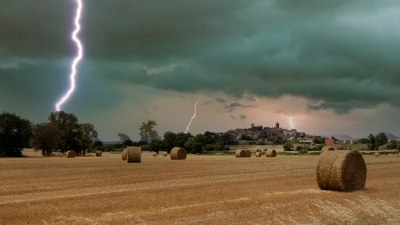What Creates the Glow of Early Mornings and Late Evenings
Explore the science behind the beautiful glow of dawn and dusk. Understand the atmospheric phenomena that create these stunning sights.

The enchanting glow of early mornings and late evenings captivates many and reflects the beauty of nature. This phenomenon, often observed at sunrise and sunset, is the result of several atmospheric processes involving the sun’s position, the Earth's atmosphere, and light scattering. Various factors contribute to the rich palette of colors we witness during these times, including the angle of sunlight, the presence of particles in the atmosphere, and the specific conditions of the sky. Understanding these elements not only deepens our appreciation for these moments but also highlights the intricate workings of our planet's atmosphere.
The Science of Light Scattering
At the heart of the captivating glow of sunrise and sunset is a process known as Rayleigh scattering. This phenomenon occurs when sunlight interacts with the particles present in the Earth's atmosphere. During both dawn and dusk, the sunlight takes a longer path through the atmosphere compared to when the sun is directly overhead. As the light travels through this denser portion of the atmosphere, shorter wavelengths of light, such as blues and greens, scatter more than the longer wavelengths like oranges and reds. This scattering phenomenon is responsible for the warm hues that characterize morning and evening skies.
The angle at which sunlight enters the atmosphere plays a critical role in the intensity and variety of colors observed. When the sun is low on the horizon, its light travels through a greater thickness of air and thus encounters more particles and molecules. This pathway allows for more scattering, enhancing the effects of color while diminishing the influence of blue light. The clearer the atmosphere, the more vibrant the colors appear, leading to breathtaking sights rich in oranges, pinks, and purples at sunrise and sunset.
The Role of Atmospheric Conditions
In addition to the angle of the sun, atmospheric conditions significantly affect the glow we experience in the mornings and evenings. Factors such as humidity, temperature, and the presence of pollutants or natural particles can influence the quality and depth of colors seen during these times. For instance, after a rain shower, the air is often clearer, leading to more brilliant sunrises and sunsets. Conversely, pollution or dust in the atmosphere can enhance the intensity of colors, but it can also lead to haziness that obscures the details of the spectacle.
Morning reveals a fresh start to the day, often marked by dew and gentle breezes. This combination can soften the light, creating a more delicate glow that is distinct from the bold colors often seen at dusk. Conversely, evenings tend to exhibit a fade from brightness to darkness, allowing for deeper colors to emerge as the sky transitions. This dynamic between color and atmosphere shifts the experience of both dawn and dusk, making them unique and cherished moments of the day.
Seasonal Influences on Sunrise and Sunset Colors
Seasonality also contributes to the variations we see in the morning and evening glow. Different times of the year affect the Earth’s tilt and how sunlight interacts with the atmosphere. For instance, during fall and spring, longer twilight hours allow for extended displays of color, while in summer, the fast-moving changes can lead to quicker sunsets. Additionally, geographical location plays a pivotal role. Those living at higher altitudes may enjoy more vivid sunsets, while coastal areas may experience foggy conditions that diffuse light differently.
During winter months, the presence of snow can also reflect light differently, adding to the palette of colors during sunrise and sunset. The atmospheric conditions are often more stable in winter, leading to sharper contrasts in the sky and enhancing the glow. Observers may notice that during certain seasons, the vibrancy of colors changes, revealing nature’s cyclical beauty. Understanding these shifts can encourage us to pay attention to the skies as they transform, inspiring creativity and motivation.
Cultural Significance of Dawn and Dusk
Throughout history, cultures across the globe have held deep meanings and symbols associated with the times of day. Early mornings often signify new beginnings, renewal, and hope. Various traditions, rituals, and spiritual practices are centered on sunrise, embodying gratitude and reverence for the new day. In many cultures, dawn has been celebrated in the form of poetry, art, and music, each expressing the beauty and tranquility of this time. The calmness of morning light diffuses through the air, inviting reflection and contemplation.
On the other hand, the glow of the evening often embodies endings, transitions, and introspection. Different cultures regard sunset as a time for closure and peace, allowing the mind to settle after the day’s activities. Artistic expressions surrounding dawn and dusk provide a rich tapestry showcasing the dualities of life—hope and nostalgia, beginnings and endings. Such reflections enhance our collective experience of these daily miracles, forging a meaningful connection with the world around us.
Capturing the Glow: Photography and Artistic Endeavors
For many photographers and artists, the beautiful colors of dawn and dusk present a unique opportunity to capture nature's artistry. The challenge of encapsulating the fleeting moments of color has led numerous individuals to explore photography techniques, seeking the best light and compositions. The golden hour—referring to the time shortly after sunrise and before sunset—has become a coveted period for capturing dramatic landscapes and portraits illuminated by soft, glowing light.
The interplay of light and shadow during these times allows artists to create stunning contrast and depth within their works. Amateurs and professionals alike are drawn to the challenge of optimizing camera settings, using filters, and planning their shoots to coincide with these moments of splendor. Moreover, advancements in technology have further enabled the art of capturing these magical moments in ways that were previously unimaginable. The hashtag culture and social media have allowed for worldwide recognition and appreciation of dawn and dusk imagery, thus fostering a global community of sunset and sunrise enthusiasts.
This visual documentation not only enriches our appreciation for light but also serves as a reminder of the beauty that surrounds us daily, urging individuals to pause and reflect on the ephemeral nature of life.
Personal Reflections on Dawn and Dusk
The personal stories and connections individuals have with the glow of mornings and evenings can vary widely. For some, the tranquility of early mornings serves as an ideal environment for mindfulness practices, yoga, or simply enjoying a cup of coffee while observing the sky transform. Early risers often find solace in the stillness that accompanies dawn, embracing the opportunity for introspection and connection with nature.
Similarly, the whimsical magic of evening lights often sparks creativity and social gatherings. Relaxing under the colorful skies creates communal experiences, as friends and families come together to witness the beauty, share stories, and experience bonding moments. The atmosphere during these times often sets the stage for contemplation, turning the gaze toward the horizon and igniting aspirations for the future. Connecting with others while surrounded by nature’s canvas enhances the shared human experience, allowing everyone to find meaning and joy in their surroundings.
Ultimately, the glow of early mornings and late evenings stands as a testament to Earth’s beauty and complexity. Each sunrise and sunset serves as a reminder to embrace the moment, reflect on the teachings of nature, and connect with ourselves and those around us. The colors we observe are not merely a visual spectacle; they embody emotions, narratives, and experiences that resonate deeply within. In the pursuit of understanding what creates this mesmerizing glow, we uncover layers of connection, creativity, and introspection that infuse everyday life with meaning.











